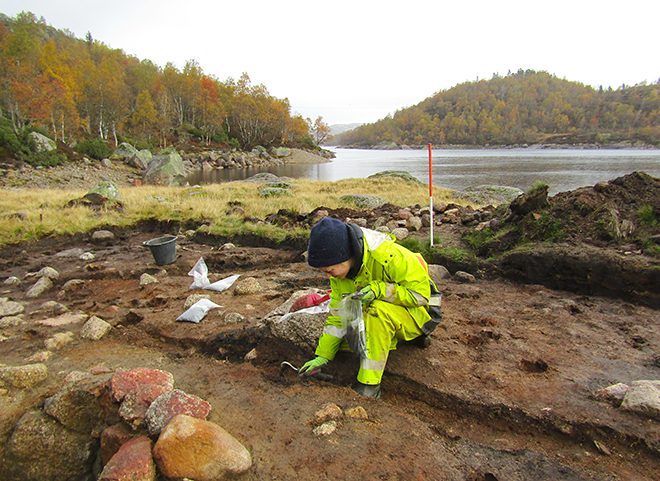The excavations are conducted by experienced archaeologists, graduates and students of archaeology, both from home and abroad. Services offered by consultants of specialized areas are used when needed, for instance in palynology (pollen analysis), soil composition (micromorphology, phosphate - and macrofossil analysis) and osteology (skeletal material).
Samples and objects are recorded, analysed and preserved. Documentation and object discoveries are incorporated in the archives and collections and are made available for further research and dissemination. The archaeologists arrange guided tours during the excavations for interested parties, such as schools, historical societies and other associations of the local communities.
Archaeological excavations
The Museum of Cultural History manage on average 50-70 archaeological excavations annually. Around 2/3 of this is funded by public builders like the NPRA (Norwegian Public Roads Administration). On average, approximately 1-2% of the total cost of major development projects goes into archaeological research. This provides new and important information about pre-historic Norway, spanning over 12 000 years.

Mathilde Arnli takes samples for 14C dating. Investigation of iron ore names from the Iron Age at Åstølen, Åseral municipality, Agder. Photo: Birgitte Bjørkli / Museum of Cultural History, UiO.
Published Mar. 18, 2014 3:37 PM
- Last modified June 2, 2022 2:43 AM